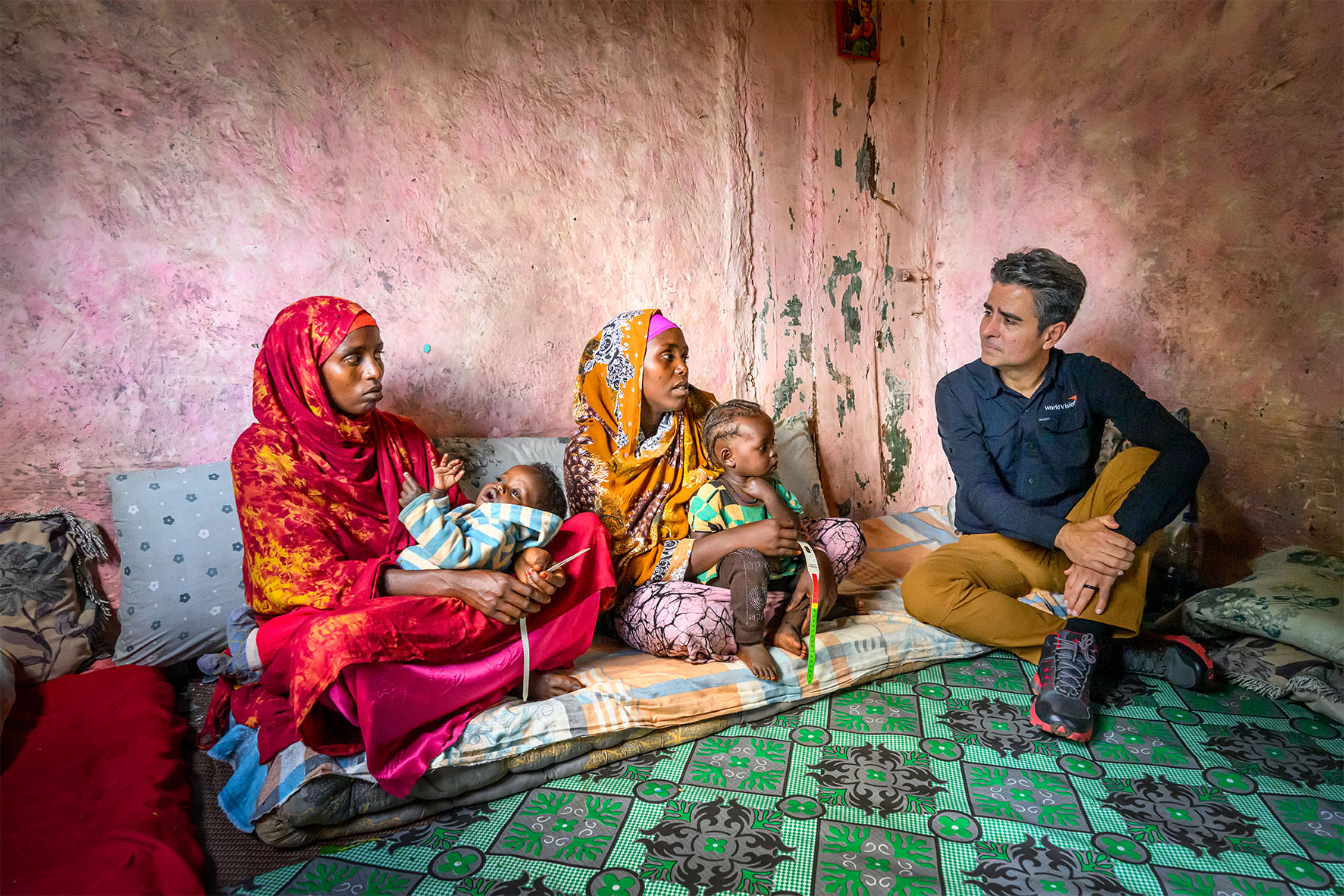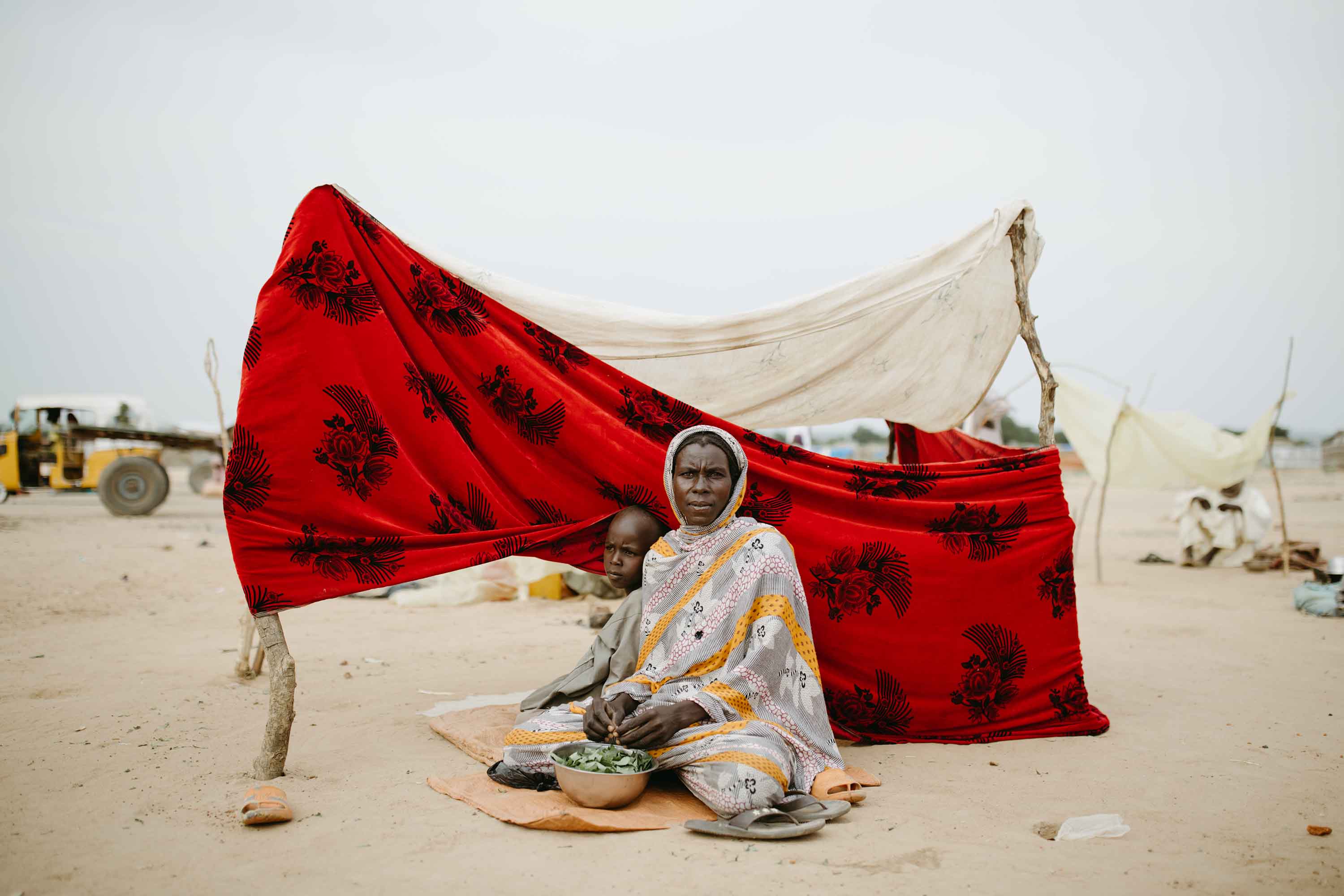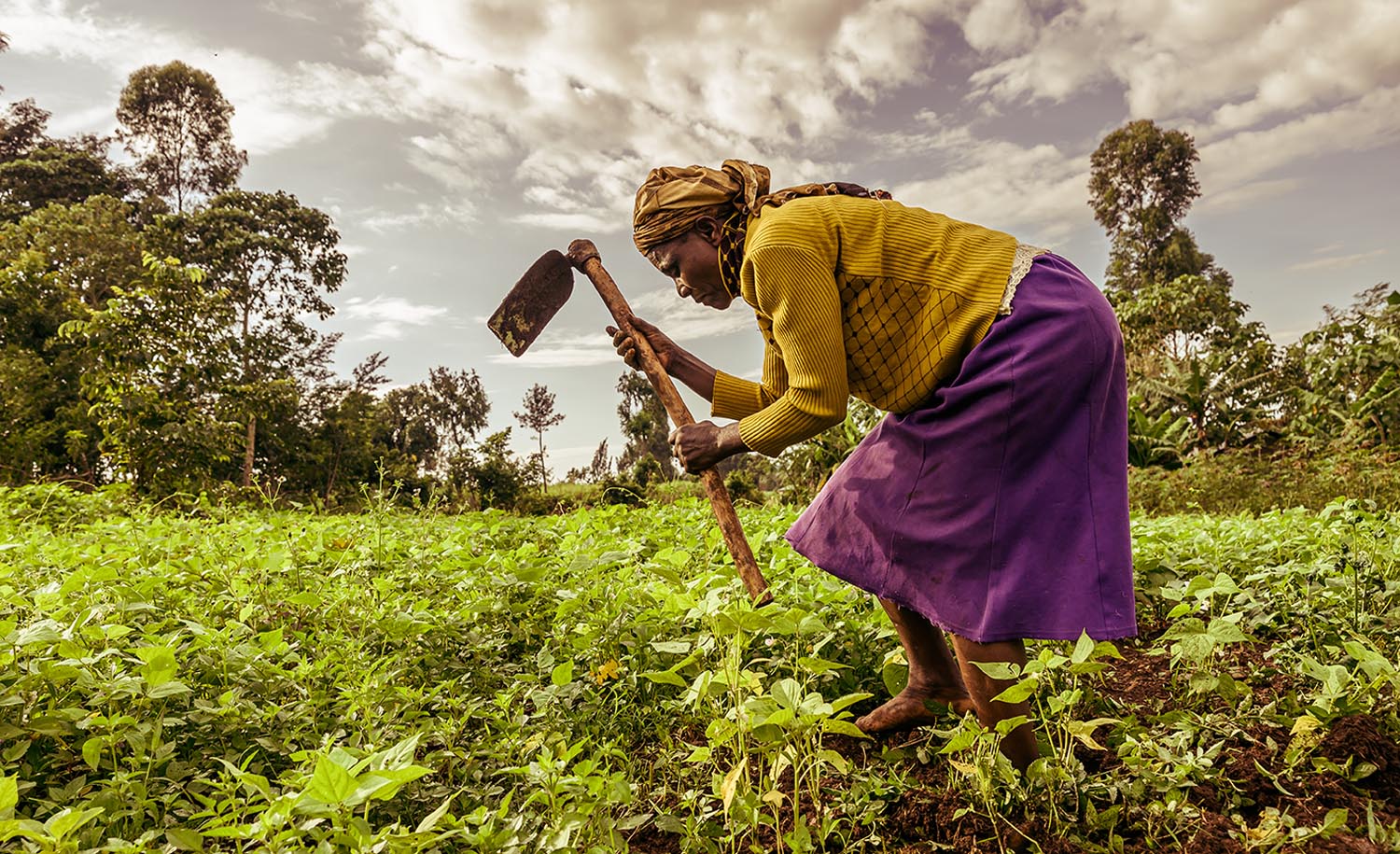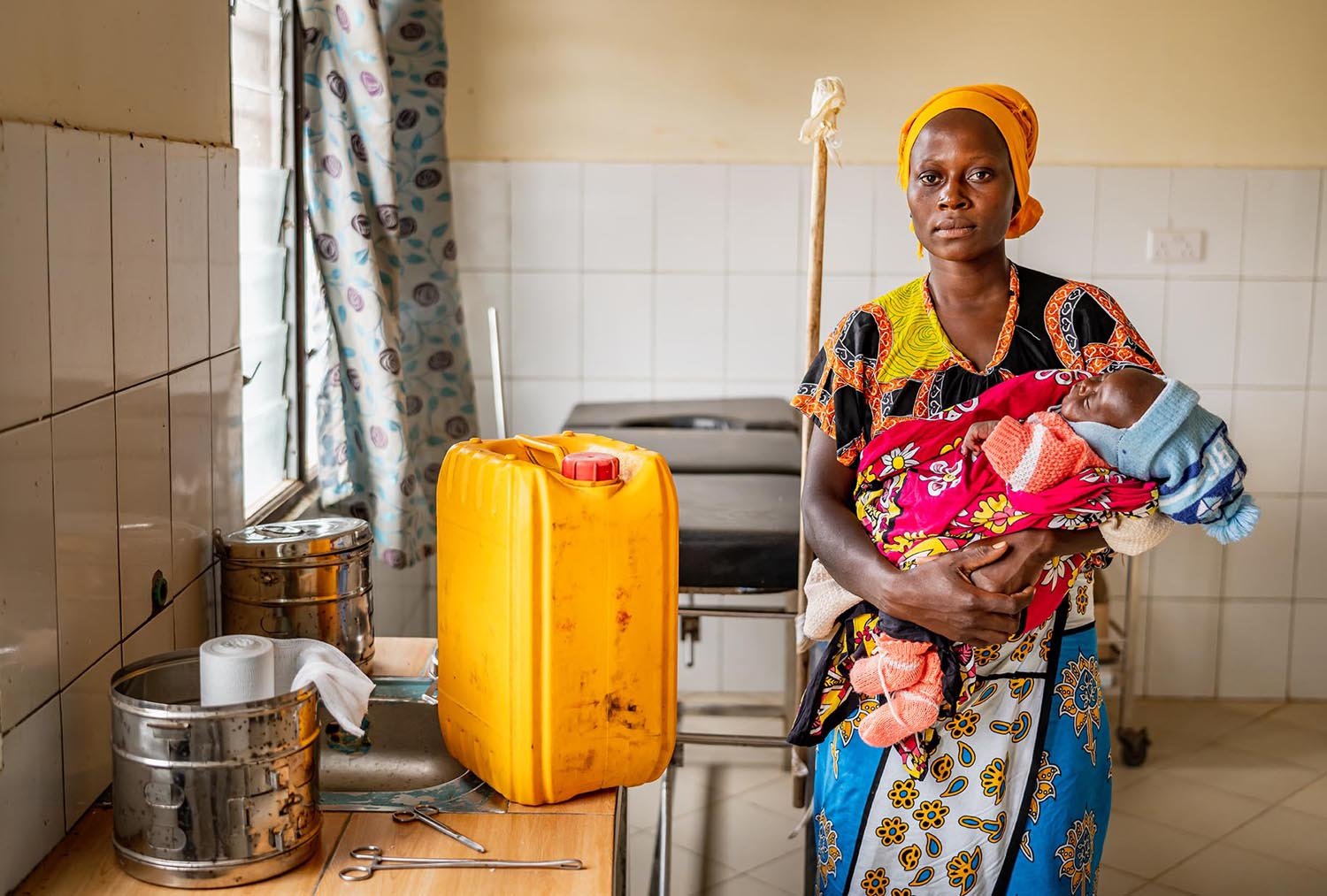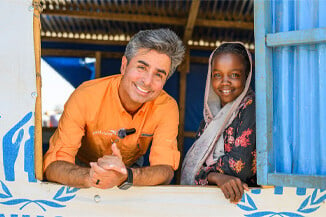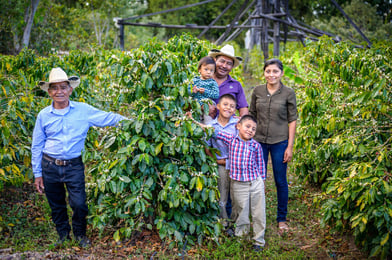
It’s an all too familiar story. A smallholder farmer and their family sweat and strain to cultivate less than 5 acres with a crop of grain or vegetables. The harvest will provide the family’s entire income and much of their food for the year.
But conditions are harsh and often unpredictable. In some parts of the world, oppressive droughts scorch the fields. Elsewhere, unexpected floods overwhelm family farms. Landslides bury crops and a household’s livelihood. Extreme weather can wipe out a smallholder farm in a matter of moments.
According to the World Bank, there are 500 million people living in extreme poverty—subsisting on less than $2 a day—who are part of smallholder farming families. If our goal is to eradicate extreme poverty, then improving the lives of this large group of farmers and their families must be a priority.
These farming families are not earning enough money to survive, let alone thrive. Our goal is to equip smallholder farmers with the tools, training, and opportunities to earn a living in agriculture. Additionally, we have to help farming families build resilience so they can withstand external shocks like extreme weather or changes in market conditions like the price of corn or fertilizer.
It’s why we highlight what we call “THRIVE Week” — five national and international days that each connect to our efforts to end extreme poverty by addressing the needs of farmers. The goal of World Vision’s THRIVE (Transforming Household Resilience in Vulnerable Environments) program is to equip families to lift themselves out of poverty by building improved and resilient livelihoods that enable significantly better incomes, food security, and child well-being
To honor THRIVE Week and shine a spotlight on those who are transforming their lives through the World Vision program, here are five encouraging stories that will feed your soul.
A harvest of training: National Farmers’ Day (Oct. 12)
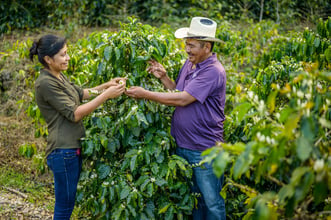 For coffee farmer Alejandro, there was a time when he felt his only good financial option was to leave his family and migrate from his home in Yamaranguila, Honduras. It seemed he couldn’t catch a break from bad weather, strenuous work, or limited job opportunities. Disaster after disaster made him lose heart. “I didn’t know how to improve my life. But I knew that if I left, I’d not only lose my land, I’d lose my family,” he said.
For coffee farmer Alejandro, there was a time when he felt his only good financial option was to leave his family and migrate from his home in Yamaranguila, Honduras. It seemed he couldn’t catch a break from bad weather, strenuous work, or limited job opportunities. Disaster after disaster made him lose heart. “I didn’t know how to improve my life. But I knew that if I left, I’d not only lose my land, I’d lose my family,” he said.
World Vision’s THRIVE program helped Alejandro turn his life around. With the training, he learned how to increase his coffee crop yield, make a better profit, and expand into other products, including fruits, vegetables, chickens, and eggs. He even learned to tend tilapia ponds, harvesting the protein-rich fish. Now Alejandro and his family have options if one of their farming endeavors fails. While migration was once on his mind, Alejandro now says, “In this place, we have everything we need for a good life.”
A harvest of options: International Day for Disaster Reduction (Oct. 13)
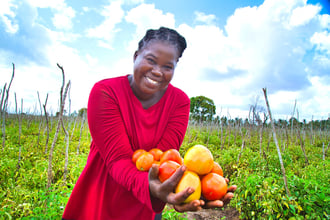 Nema lives in a part of Kenya that gets uncertain rains, so farmers like her often face weather conditions that reduce or totally wipe out their crops. When this happens, people like Nema and her children go hungry. They need ways to become resilient to weather-related shocks that affect their livelihoods.
Nema lives in a part of Kenya that gets uncertain rains, so farmers like her often face weather conditions that reduce or totally wipe out their crops. When this happens, people like Nema and her children go hungry. They need ways to become resilient to weather-related shocks that affect their livelihoods.
Nema is one of 500 farmers World Vision is supporting in her region. She’s part of a farming program that enhances food security by training growers on regenerative agriculture, sustainable farming practices, harvest management, budgeting, and saving. To help the community depend less on rain for growing their crops, Nema and her fellow farmers also have access to irrigation kits. The result of such successful support shows in the plentiful harvest of tomatoes springing up from the ground and providing food and income for Nema and her family — in good times and even in bad times!
A harvest of leaders: International Day of Rural Women (Oct. 15)
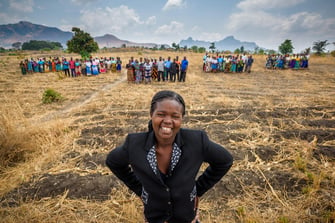 Ireen is very sharp and hardworking, but as a rural woman farmer in Chilenje, Malawi, she wasn’t given the tools or training to be successful in her business.
Ireen is very sharp and hardworking, but as a rural woman farmer in Chilenje, Malawi, she wasn’t given the tools or training to be successful in her business.
Enter THRIVE.
THRIVE taught women farmers in Malawi new ways to farm — like how to plant beans and potatoes together at the same time. Ireen was trained in soil and water conservation and learned she could grow crops all year long by using water from ponds on her property. And thanks to a small loan from VisionFund, World Vision’s microfinance arm, she could purchase higher quality seeds and fertilizer. Eventually, the community stopped cutting down trees, pruning them for fuel instead, which helped improve the soil.
The farming group soon recognized Ireen’s gifts and elected her to become their leader. She leads five groups of farmers who cultivate individually but sell together. Working this way turns subsistence farming into a business. The community began to pull together like never before.
“Everybody had been doing it on their own,” she says. “Now we would do things together.”
A harvest of good food: World Food Day (Oct. 16)
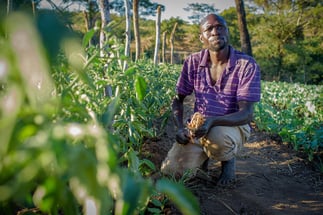 Milton struggled to provide for his family in Zambia because of a severe drought. But that changed when he was chosen by THRIVE to be trained in a conservation farming method called Farming God’s Way.
Milton struggled to provide for his family in Zambia because of a severe drought. But that changed when he was chosen by THRIVE to be trained in a conservation farming method called Farming God’s Way.
After the training, Milton and his family planted a large garden that soon sprouted huge, flowering tomato plants. Beans are growing between the tomato plants and there are rows and rows of collard greens.
Every day after school, Milton’s daughter Joyce comes straight to the garden to help with watering. “I like to stay here at the garden. I water and I help to keep animals out of the plants,” she says. She likes the collard greens best, but when there are ripe tomatoes, she loves to pick and eat them right there in the garden. “It’s nice to have this good food. Others don’t have such good things to eat,” she says.
A harvest of provision: International Day for the Eradication of Poverty (Oct. 17)
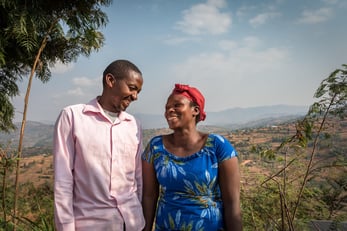 When Phocas looks back on where he came from, he feels a sense of satisfaction — despite having lost something he had for a long time. “Slowly by slowly today I am a different person,” he says. “I no longer need to depend on working in people’s fields. Instead, I support others.”
When Phocas looks back on where he came from, he feels a sense of satisfaction — despite having lost something he had for a long time. “Slowly by slowly today I am a different person,” he says. “I no longer need to depend on working in people’s fields. Instead, I support others.”
As he puts it, Phocas was “the poorest of the poor” in his community of Karaba, Rwanda. Phocas used to work in other people’s fields to support his family of six children. They lived in a small shelter, not a house.
Then World Vision trained him in growing onions, cabbages, and carrots as cash crops. He began to earn much more money and bought plots of land to extend his farm. On a World Vision–sponsored trip to northern Rwanda he met model farmers, including one who raises chickens. Inspired, Phocas returned home and raised the funds to purchase 100 chicks. They grew fast and laid a lot of eggs. Through the money he earned selling eggs, he bought a cow.
Phocas expanded his farm to include 120 chickens, three cows, six goats, and eight rabbits! Phocas doesn’t work in other people’s fields any longer. He and his family lack nothing they need.
So what did they lose? Extreme poverty.
The success of THRIVE
These five stories are a small sample of how THRIVE is changing what it looks like for smallholder farmers and their families to survive. In an independent study of THRIVE in Tanzania, researchers found that, when faced with shocks, over 94% of THRIVE households were able to avoid negative coping strategies like taking children out of school; sending children to work for money; reducing food intake; or selling off productive assets like land, equipment, or farm animals.
THRIVE continues to provide holistic solutions by giving the most vulnerable families tools and training that allow them to create real transformation in their own lives. And we believe that’s something worth celebrating this week and every week of the year.
Ready to help more families THRIVE? Join us by signing up for the newsletter or giving to THRIVE at worldvisionphilanthropy.org/ee.
Watch THRIVE farmers in action!

